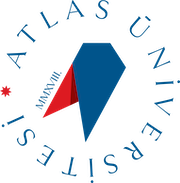| Week |
Subject |
Related Preparation |
| 1) |
Brand Concept, Brand Types and Fundamentals of Brand Management |
OKAY A. (2013). Kurum Kimliği. İstanbul: Derin Yayınları
OLINS W. (2012). Marka El Kitabı. İstanbul: Calisto Kitap
TOSUN N. (2020). Marka Yönetimi. İstanbul: Beta Basım Yayın |
| 2) |
Brand Positioning Concept, Brand Positioning Types, Criteria and Strategies |
OKAY A. (2013). Kurum Kimliği. İstanbul: Derin Yayınları
OLINS W. (2012). Marka El Kitabı. İstanbul: Calisto Kitap
TOSUN N. (2020). Marka Yönetimi. İstanbul: Beta Basım Yayın |
| 3) |
Brand Identity, Brand Symbols, Brand Personality |
OKAY A. (2013). Kurum Kimliği. İstanbul: Derin Yayınları
OLINS W. (2012). Marka El Kitabı. İstanbul: Calisto Kitap
TOSUN N. (2020). Marka Yönetimi. İstanbul: Beta Basım Yayın |
| 4) |
Brand Culture, Branding process and phases, Brand Emotions |
OKAY A. (2013). Kurum Kimliği. İstanbul: Derin Yayınları
OLINS W. (2012). Marka El Kitabı. İstanbul: Calisto Kitap
TOSUN N. (2020). Marka Yönetimi. İstanbul: Beta Basım Yayın |
| 5) |
Symbolic and Functional Branding |
OKAY A. (2013). Kurum Kimliği. İstanbul: Derin Yayınları
OLINS W. (2012). Marka El Kitabı. İstanbul: Calisto Kitap
TOSUN N. (2020). Marka Yönetimi. İstanbul: Beta Basım Yayın |
| 6) |
Brand Equity, Brand Awareness, and Brand Associations |
OKAY A. (2013). Kurum Kimliği. İstanbul: Derin Yayınları
OLINS W. (2012). Marka El Kitabı. İstanbul: Calisto Kitap
TOSUN N. (2020). Marka Yönetimi. İstanbul: Beta Basım Yayın |
| 7) |
Brand Attitude, Brand Loyalty, Communication Strategies in Brand Equity |
OKAY A. (2013). Kurum Kimliği. İstanbul: Derin Yayınları
OLINS W. (2012). Marka El Kitabı. İstanbul: Calisto Kitap
TOSUN N. (2020). Marka Yönetimi. İstanbul: Beta Basım Yayın |
| 8) |
MIDTERM |
|
| 9) |
Branding Strategies, Brand Extension and Co-Branding Strategies |
OKAY A. (2013). Kurum Kimliği. İstanbul: Derin Yayınları
OLINS W. (2012). Marka El Kitabı. İstanbul: Calisto Kitap
TOSUN N. (2020). Marka Yönetimi. İstanbul: Beta Basım Yayın |
| 10) |
Branding and Consumer Behaviour, Buying Behaviour |
OKAY A. (2013). Kurum Kimliği. İstanbul: Derin Yayınları
OLINS W. (2012). Marka El Kitabı. İstanbul: Calisto Kitap
TOSUN N. (2020). Marka Yönetimi. İstanbul: Beta Basım Yayın |
| 11) |
Brand Communication Strategies, Research in Communication Strategy Determination, Personal Selling, Sales Development |
OKAY A. (2013). Kurum Kimliği. İstanbul: Derin Yayınları
OLINS W. (2012). Marka El Kitabı. İstanbul: Calisto Kitap
TOSUN N. (2020). Marka Yönetimi. İstanbul: Beta Basım Yayın |
| 12) |
Point-of-purchase communications, public relations in the context of direct marketing and marketing communications |
OKAY A. (2013). Kurum Kimliği. İstanbul: Derin Yayınları
OLINS W. (2012). Marka El Kitabı. İstanbul: Calisto Kitap
TOSUN N. (2020). Marka Yönetimi. İstanbul: Beta Basım Yayın |
| 13) |
Advertising Strategies, Sponsorship and New Media in Brand Communication |
OKAY A. (2013). Kurum Kimliği. İstanbul: Derin Yayınları
OLINS W. (2012). Marka El Kitabı. İstanbul: Calisto Kitap
TOSUN N. (2020). Marka Yönetimi. İstanbul: Beta Basım Yayın |
| 14) |
Student Presenatitions |
OKAY A. (2013). Kurum Kimliği. İstanbul: Derin Yayınları
OLINS W. (2012). Marka El Kitabı. İstanbul: Calisto Kitap
TOSUN N. (2020). Marka Yönetimi. İstanbul: Beta Basım Yayın |
| 15) |
Student Presentations |
OKAY A. (2013). Kurum Kimliği. İstanbul: Derin Yayınları
OLINS W. (2012). Marka El Kitabı. İstanbul: Calisto Kitap
TOSUN N. (2020). Marka Yönetimi. İstanbul: Beta Basım Yayın |
| 15) |
Student Presentations |
OKAY A. (2013). Kurum Kimliği. İstanbul: Derin Yayınları
OLINS W. (2012). Marka El Kitabı. İstanbul: Calisto Kitap
TOSUN N. (2020). Marka Yönetimi. İstanbul: Beta Basım Yayın |
| 16) |
FINAL EXAMS |
|
| |
Program Outcomes |
Level of Contribution |
| 1) |
Graduates have basic theoretical and applied knowledge about anesthesia. |
|
| 2) |
Graduates have knowledge of the ethical framework related to anesthesia practices. |
|
| 3) |
Graduates use basic theoretical and applied knowledge about anesthesia. |
|
| 4) |
Graduates carry out a given task independently using their basic knowledge of anesthesia applications. |
|
| 5) |
Graduates can critically evaluate their basic knowledge and skills related to anesthesia. |
|
| 6) |
Graduates identify their needs for learning and have the competence to direct their own learning. |
|
| 7) |
Graduates express themselves effectively by communicating both verbal and written by using information and communication technologies related to the field of anesthesia. |
|
| 8) |
Graduates follow the developments in the agenda of the society and the world in the field of health and evaluate them with a sense of social responsibility. |
|
| 9) |
Graduates perform pre- and post-anaesthetic evaluation, pre-application material and drug preparation, and monitoring. |
|
| 10) |
Graduates follow the patient during the anesthesia application. |
|
| 11) |
Graduates know the basic functioning mechanisms of the organs and systems that make up the human organism and the effects and side effects of the drugs used in anesthesia on these systems. |
|
| 12) |
Graduates can evaluate the patient's airway at the end of the surgical intervention and ensure patient safety in all processes. |
|
| 13) |
Graduates know the laws, regulations, legislation and professional ethical rules regarding their duties, rights and responsibilities as Anesthesiologist and act in accordance with these rules. |
|
| 14) |
Graduates are aware of the duties and responsibilities of the anesthesia technician, have sufficient knowledge and skills, keep patient caregivers and people at the forefront, can perform active teamwork together with effective communication, and aim to constantly learn and improve the consumed information. |
|
 BİLGİ PAKETİ / DERS KATALOĞU
BİLGİ PAKETİ / DERS KATALOĞU
